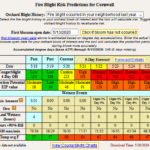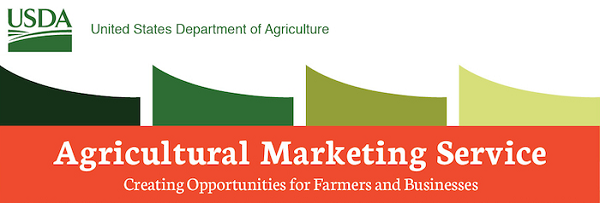By Terence Bradshaw
Apple bloom has started in much of the state, and the weather looks about as good as it gets for pollination and fertilization. It’s been dry since last Friday, and, in most sites, that rain wasn’t even as much as expected. So, water if you can, trees in bloom and setting fruit have high energy requirements, and water is a key part of mineral nutrient transfer and photosynthesis. While I’m at it, this is a good time to get your fertilizers on. Nitrogen fertilizers should be applied between bloom and June 15, while your potassium and other fertilizers can go down between now and midsummer. It’s also not too late to put on foliar fertilizers, such as the prebloom nutrient cocktail recommended by Cornell University and New England apple experts. However, given the bloom, the dry weather, and minimal disease pressure resulting from that, I’d put the sprayer away for a while- with the caveat I’ll leave below..
It looks like dry weather will be the rule for a while, so apple scab just isn’t an issue. That means that, when we do get some wetting, an pretty good infection period could result, so keep an eye on things and plan to cover ahead of any rains, which look to be at least a week out. When the weather is dry, ascospore maturation goes into hibernation so we can’t assume the spores will all mature and release with the next rain and scab season will be done with in one event. Of course, use NEWA to help keep an eye on your scab and other disease issues.
The disease we really think about during bloom, and especially during a warm/hot bloom, is fire blight. This bacterial disease acts differently from scab and other fungal diseases in two key ways- first, it is essentially internal in the tree, and therefore can act systemically and therefore tends to stick around for a while. Next, its infective pathogen can ramp up its population rapidly under warm conditions. The cool spring so far has kept fire blight danger (measured as epiphytic infection potential, or EIP) down to a minimum. However, that EIP is expected to ramp up fast in the next week:
The fire blight model does assume that you a) have inoculum present, and b) that you have water to move it into blossoms which allow entry into the tree’s vascular system. You can adjust the latter condition a little in NEWA, and the former is a judgement call as far as making an application is concerned. I would have at least one application of streptomycin on-hand and be prepared to treat blooming trees, particularly if you have a wetting event. This could include heavy dew, especially if you have a day afterward that has high relative humidity. High-value, fire blight-prone varieties may warrant a prophylactic treatment going into the weekend, but that’s a tough call.
For organic growers, Actinovate, BlightBan A506, Bloomtime Biological, Blossom Protect, Double Nickel, Regalia, and Serenade are labeled biological controls. I can’t vouch for any of their effectiveness, and I know that some growers apply copper or lime sulfur (warning- both are very phytotoxic) during bloom to manage the disease but again, no promises are offered from me there. If you can, I would suggest Serenade or one of the other biological materials if you have it on-hand and to watch carefully for symptoms which will require cutting out.
Once the EIP is sufficiently high (in NEWA, 100 is considered high enough to cause infection), you need three factors for infection to occur: open wounds (i.e. blossoms or fresh pruning cuts); mean temperature above 60°F; and wetting, even a spray or dew event can be enough to move bacteria into susceptible openings.
This risk is pretty much widespread across the state. The thing to remember is that protective measures, i.e. application of streptomycin in most orchards, or caustic materials/biological controls in organic orchards, must be applied to open wounds or blossoms within 24 hours before or after infection. So if we assume that an infection event occurs in a rain you’ll want strep or another material (really, if your orchard isn’t certified organic, strep is the only material to consider) on within a day. It will be hot Friday, so blossoms will be opening all day (or petals falling on cultivars that have finished bloom already) and potential for phytoxicity will be greater. The later you can go, the better to make sure you cover any blossoms that open, but don’t delay and miss it.
But, make sure to look at the forecast at least twice a day. We not only are not predicting rain, but also, at least for the next few days, predicting dew, either. The NEWA fire blight model output (see above) includes predictions for rain and dew.
Harbour is the strep material available to most growers. I would recommend applying at 1-2 pounds per acre based on tree canopy volume, if in doubt, err on the lower end. I also recommend including a wetting agent like Regulaid or LI-700. If possible, apply on its own, without other fungicides or insecticides (you are in bloom, so no insecticides anyway). You will get leaf yellowing from this application, expect it and the tree will soon grow out of it. One application Wednesday PM-Friday AM should cover you. Once any particular blossom is treated, it’s protected. Temperatures are expected to drop after Friday, which lowers risk, but if high risk continues through the weekend and you keep having blossoms open, then a second application Saturday-Monday (I have no good idea of what the weather will be five+ days from now) may be warranted.
Trees that are at full petal fall are not susceptible, but straggling late blooms can be infection sites. Ideally, the whole orchard would be treated. If you need to prioritize, go first for cultivars that had fire blight in the last two yearr or highly susceptible cultivars (Gala, Ginger Gold, Honeycrisp, Cortland, Paulared, etc), and of course blocks that are in bloom. Application well after any wetting event,will not give protection against it. Also, despite the wording on the Harbour label, continued treatment every 10-14 days after bloom is not recommended (at all- don’t do it), and doing so is a) expensive, b) a waste, and, most importantly, c) the best way to develop antibiotic resistance in E. amylovera populations.
As for insects, there are management actions you can be doing now. Of course, no insecticides during bloom. But you should be checking pheromone-baited codling moth traps at least every other day and noting the date of first capture in order to set your biofix for the NEWA models we’ll use later. Now is a good time to get mating disruption ties for dogwood borer or codling moth up in the orchard.
Finally, keep a good eye on the bloom and on pollinator activity in the orchard. I suspect that this will be a year that we’ll need to really work on crop thinning, even though we’re in an ‘even year’ which, in the past decade or so, has meant smaller total crop overall. We’ll talk about thinning next time.
Where trade names or commercial products are used for identification,
no discrimination is intended and no endorsement is implied.
Always read the label before using any pesticide.
The label is the legal document for the product use.
Disregard any information in this message if it is in conflict with the
label.
The UVM Tree Fruit and Viticulture Program is supported by the
University of Vermont Agriculture Experiment Station, a USDA NIFA E-IPM
Grant, and USDA Risk Management Agency Funds.



